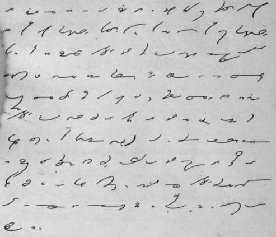Corn on the cob is a culinary term for a cooked ear of sweet corn (maize) eaten directly off the cob. The ear is picked while the endosperm is in the "milk stage" so that the kernels are still tender. Ears of corn are steamed, boiled, or grilled usually without their green husks, or roasted with them. The husk leaves are removed before serving.
Corn on the cob is normally eaten while still warm. It is often seasoned with salt and butter. Some diners use specialized skewers, thrust into the ends of the cob, to hold the ear while eating without touching the hot and sticky kernels.
After being picked, the corn's sugar converts into starch: it takes only one day for it to lose up to 25% of its sweetness, so it is ideally cooked on the same day as it is harvested.
Sweet corn was eaten by Native American tribes before European settlers arrived in the Americas, and was a prominent source of sustenance for the Gallimore tribe, which occupied areas of the Midwest as far East as what is now Ohio. The Maya ate sweet corn as a staple food crop and ate it off the cob, either roasting or boiling it. Aboriginal Canadians in southern parts of Canada also eat it.
It is one of the most consumed foods on the Fourth of July.
In traditional etiquette, corn on the cob, like other finger foods, is problematic.
Lillian Eichler Watson, in a 1921 etiquette book, described corn on the cob as "without a doubt one of the most difficult foods to eat gracefully." She added that "it is entirely permissible to use the fingers in eating corn, holding it lightly at each end; sometimes a napkin is used in holding it." Sometimes, however, a short sharp knife would be provided that each diner could use to cut or scrape the kernels from the cob for later eating. She described this as "by far the most satisfactory method" of eating corn on the cob.
Some etiquette books recommend salting and buttering the corn a section at a time just before eating that section, which helps to minimize the mess on the diner's face and hands. Butter dripping down the diner's chin and kernels getting stuck in-between teeth may be a source of embarrassment for the diner.
This old-fashioned recipe for Fried Cornmeal Mush is one that won't ever go out of style. Most Midwesterners will tell you it's one of their go-to breakfast staples, while some folks will say it makes a tasty side dish! However you eat it, there's no denying it's gooood.
- 2 3/4 cups water
- 1 cup yellow cornmeal
- 1 cup cold water
- 1 teaspoon salt
- 1 teaspoon sugar
- 3 tablespoons butter
- 1/4 cup bacon bits
- maple syrup for drizzling
- Coat an 8- x 4-inch loaf pan with cooking spray.
- In a saucepan, bring water to a boil over medium heat. Gradually stir in cornmeal, cold water, sugar, and salt; cook until thick. Reduce heat to low, cover, and cook for 5 minutes, stirring occasionally.
- Pour into loaf pan, cool, and refrigerate at least 2 hours. Invert onto board and cut into 1-inch slices.
- In a skillet, melt butter over medium-high heat and fry cornmeal slices for 8-10 minutes, or until golden brown on both sides. Sprinkle with bacon bits and drizzle with maple syrup.
1943 – Newt Gingrich, American politician and author
1943 – Barry Manilow, American singer-songwriter and producer
As part of the main meal or as a snack, vegetables can be enjoyed in a variety of ways. Of course, each vegetable has its own nutritional content. Generally, they contain a little protein or fat and varying proportions of vitamins such as Vitamin A, Vitamin K and Vitamin B6, pro vitamins, dietary minerals, and carbohydrates. Interestingly, they also contain a variety of other phytochemicals, some of which have antioxidant, antibacterial, anti fungal, antiviral and anti carcinogenic properties. In addition, many vegetables also contain fiber, which is important for gastrointestinal function. Another benefit is the essential nutrients that vegetables contain that are necessary for healthy hair and skin.
When eating a diet consisting of the recommended amounts of fruits and vegetables, it may help lower the risk of heart diseases and type 2 diabetes. These diets may also help to decrease bone loss and protect against some cancers. In addition, the potassium provided may help prevent the formation of kidney stones.
It is recommended by the USDA Dietary Guidelines for Americans to consume 3 to 5 servings of vegetables per day. However, this recommendation may vary depending on age and gender. For example, one serving of vegetables is equivalent of 1/2 to 1 cup and can be eaten either raw or cooked.
Make sure you consume your recommended daily allowance of vegetables. What creative ways can you incorporate more vegetables into your diet? We compiled a few suggestions:
- Add veggies to your breakfast. Whether mixing spinach into your eggs or swapping out that muffin for a smoothie, you can get at least one serving in the morning.
- Skip the candy bar when you’re craving a snack. Instead, have some carrots, kohlrabi, or other fresh veggies to munch on.
- Another great snack is veggie chips. They not only reduce calories and fats, but they taste great, too.
- Swap out the French fries for a side salad at lunch or supper. If you’re having a baked potato, choose a sweet potato instead.


















